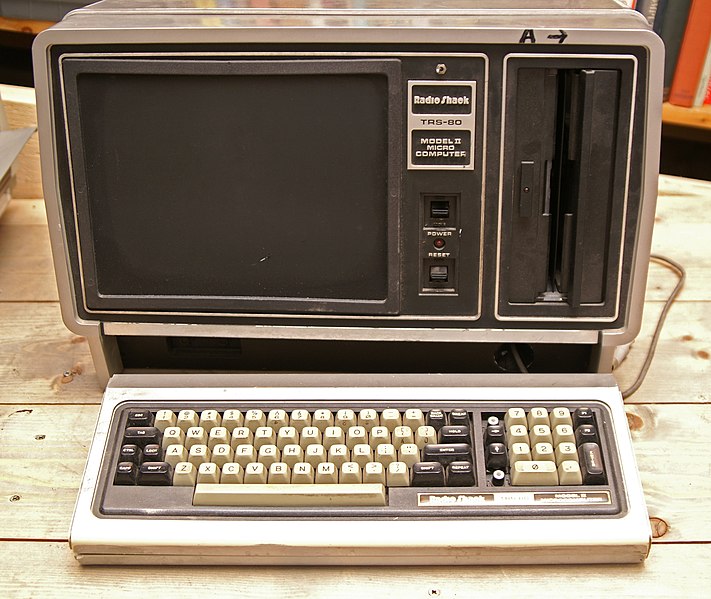Any trip to eBay will expose you to one of the sadder facts of life: most of us are willing to fork over huge sums for useless junk.
Be it a carton of Elvis Presley’s toenail clippings, an old Star Wars figurine, or a collection of vintage sweets, there are people out there who will fork over more cash than you make in a year for a chance to own some of this useless junk. Same with computers.
The antique computer market is booming, with yesterday’s geeks realizing they can now afford computers they could only dream of 30 years ago. the rarest computer like:
Highlights of Contents
The Apple III ($3,815)
![]()
credit: Will Scullin
Packing an earth-shattering 128KB RAM, the Apple III was by anyone’s standards an abysmal failure. Released in 1981, just as the world was gearing up for IBM’s leap from 8-bit to 16-bit, it managed to be both behind the times and damn-near unusable.
The line folded in 1985, when Apple decided to continue producing the popular Apple II instead of their new monstrosity.
And there it would have ended, had retrocomputing not become a thing. Despite being outdated in the freakin’ 80s, the Apple III is now a sought after model, retailing at over 3 grand. That’s more than a goddamn 27-inch iMac.
Who buys this stuff? Fanboys. The sort of people who have owned every single iPhone and walk around in turtleneck sweaters, practicing their messiah complex.
IBM 5100 ($19,975)
![]()
credit: Marcin Wichary
One of the earliest portable computers, if ‘portable’ means 24kg and as big as a goddamn desk. This 64KB offering from IBM was revolutionary when first released; cramming more hardware into a smaller space than anyone had ever done before.
Although still prohibitively expensive, especially for 1975, the 5100 was one of the first steps toward the desktop computers we all use today. It also catapulted IBM straight to the forefront of computer engineering, a position they retain to this day. Oh, wait.
Who buys this stuff? Yesterday’s geek. The sort of guy who spent 1975 working at Radio Shack; but has since made a fortune selling subprime mortgages in Second Life.
Know more: Benefits Of Having Computer Screen Monitoring Software
Osborne 1 ($1,795)
![]()
credit: Marcin Wichary
The Osborne was the first genuinely portable rarest computer, streamlining the concept of IBM’s behemoth up there.
Released in 1981, the machine was so phenomenally successful it catapulted Osborne Computers from a two-employee bedroom outfit to a 3,000+ employee international leader in 12 goddamn months. It made a millionaire of Adam Osborne; for two years.
In 1983 his company went bankrupt, concluding the most staggering rise and fall of any company prior to the dotcom bubble.
Who buys this stuff? Adam Osborne. Desperately trying to relive those heady years.
Radio Shack TRS Model II ($3,899)

credit: Wikipedia
Creative Computing in 1984 noted that the Model II would “have taken the business market by storm, had it not had a nameplate reading ‘Radio Shack’”. For 1979 it was pretty special: running at 64K RAM, it utilized a nifty little innovation that allowed most of the memory to be freed up for software.
Again, this would have been wonderful; if anyone had bought the goddamn thing. It was like Betamax all over again: the competition wiped the floor with the Model II, proving that even in the 70s, nerds were pretty discerning.
Who buys this stuff? Hipsters. The same hipsters who walk around listening to music on cassette, watch films on laserdisc and write their awful screenplays on an old IBM Word Processor.
Know more: Self Management tips
Otrona Attaché ($3,995)
In an attempt to emulate Osborne’s business model, Ron Lingeman developed the Attaché in 1982; mirroring Osborne so perfectly he had to file for bankruptcy in 1984.
We don’t know what it was about living in the early 80s that made us all hate portable computers so much; but by gum, hate them we did.
Who buys this stuff? Adam Osborne. To wallow in the bitter schadenfreude of knowing he wasn’t the only one.
Compiled by the tech-heads at Policy Expert. If you own any of the above pieces of vintage technology, then you might want to consider getting covered with contents insurance from Policy Expert.
Few Hand Picked articles for you
How to Onboard New Employees Remotely After Hiring? 5 Useful Tips
Employee Monitoring Steps and Its Pros and Cons
5 Best Cybersecurity Tips For Your Remotely Working Employees
How Can You Motivate Your Employee During Lockdown?

Really informative blog article.Really thank you!
I brought a computer ago from a thrift store for my kids to play games on, a few yrs later I had a house fire and had to inventory everything for my claims , I started to throw the old computer in the trash b/c I was sure it was not worth anything but b/f I throw it away I took a picture of it. I end up researching it , that $20 buy end up worth more the $3000 now